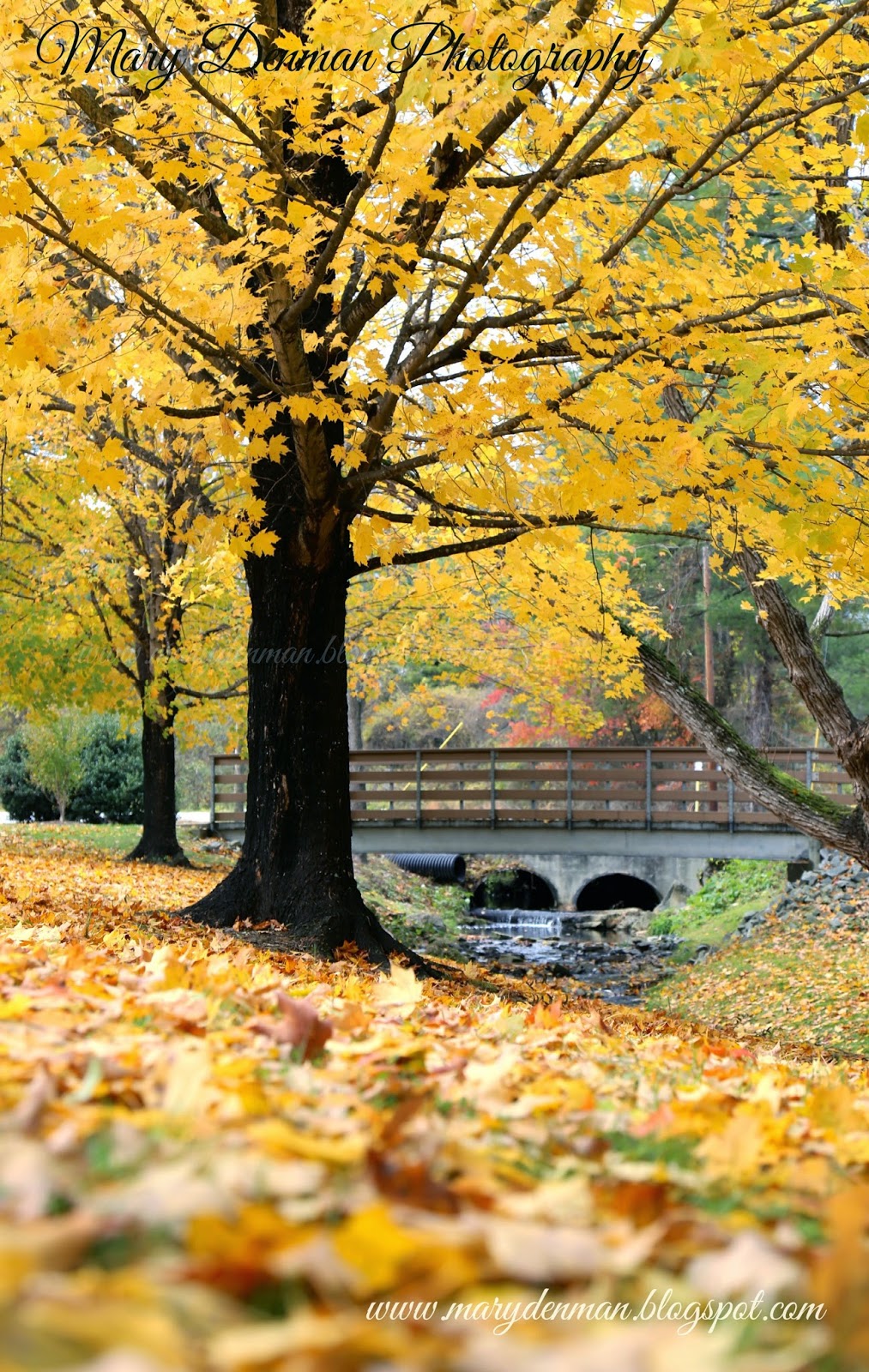 |
| Landscape by Mary Denman Photography |
As you get to know more about how to use them, then you can experiment.
The first thing to understand is that landscape is also known as horizontal orientation.
Likewise, portrait orientation is also known as a vertical shot.
Photo 1
Let's get to some examples and start with which was taken in landscape.
The first thing to understand is that landscape is also known as horizontal orientation.
Likewise, portrait orientation is also known as a vertical shot.
 |
| Photo 1: Landscape Orientation |
Let's get to some examples and start with which was taken in landscape.
This orientation takes advantage of the bridge over the stream that runs through the park. I caught the long lines of the road and bridge and they are emphasized by keeping the camera in a horizontal position. Then, I framed the picture with a tree on either side of the edges.
Photo 2
This is in portrait style. It's the same trees, stream and bridge.
Can you see the difference in the photo by simply rotating the camera 90 degrees?
This is also called a vertical shot. I framed this picture very differently. Notice the one dominant tree on the right side of the photo. The bridge is still there, but is no longer a major part of the shot. Do you see any other differences?
Here's a question for you: Can you say photo 1 is definitely better than photo 2? Or vice versa?
I don't think so in this case. It really depends on your preference. But hopefully you can see how much orientation changes the overall effect of your composition.
Photo 3
This is an example when one orientation is definitely better.
This stream had a beautiful reflection of the tree. Because of the length of the water, I used portrait or vertical composition. It allows your eye to be drawn the length of the stream and the beautiful lines it carves.
I don't even have a horizontal shot to compare to this because it just didn't work. Portrait was the clear choice here.
Tip 1: If in doubt, try both a vertical and horizontal shot to see which is better.
You may be surprised. Both may turn out well, or one my be the clear winner.
Photo 4
Not only did I use the vertical orientation to create this shot, but I also used a fresh perspective. In order to get this, I had the camera on the ground and rotated it to look up from there.
Your eye is once again drawn deep into the picture. The bridge plays a prominent role in the shot. Personally, I love the blurred leaves in the foreground.
 |
| Photo 2: Portrait Orientation |
Photo 2
This is in portrait style. It's the same trees, stream and bridge.
Can you see the difference in the photo by simply rotating the camera 90 degrees?
This is also called a vertical shot. I framed this picture very differently. Notice the one dominant tree on the right side of the photo. The bridge is still there, but is no longer a major part of the shot. Do you see any other differences?
Here's a question for you: Can you say photo 1 is definitely better than photo 2? Or vice versa?
I don't think so in this case. It really depends on your preference. But hopefully you can see how much orientation changes the overall effect of your composition.
 |
| Photo 3: Portrait |
Photo 3
This is an example when one orientation is definitely better.
This stream had a beautiful reflection of the tree. Because of the length of the water, I used portrait or vertical composition. It allows your eye to be drawn the length of the stream and the beautiful lines it carves.
I don't even have a horizontal shot to compare to this because it just didn't work. Portrait was the clear choice here.
Tip 1: If in doubt, try both a vertical and horizontal shot to see which is better.
You may be surprised. Both may turn out well, or one my be the clear winner.
 |
Photo 4: Portrait
|
Photo 4
Not only did I use the vertical orientation to create this shot, but I also used a fresh perspective. In order to get this, I had the camera on the ground and rotated it to look up from there.
Your eye is once again drawn deep into the picture. The bridge plays a prominent role in the shot. Personally, I love the blurred leaves in the foreground.
If you've read my blog for a while, you'll notice I talk about perspective. By taking Photo 4 from an angle we rarely see, this creates a more memorable shot.
Tip 2: Try a new perspective when composing a shot.
Today is an overview of the two orientations. Next week, in part 2, I will give you some other guidelines about how to choose one or the other and explain how visual lines in the picture do make a difference.
For BLOGGERS: When you write a post, do you want it to draw your reader in like the portrait stream shot? Maybe you want to present a subject with a fresh perspective like Photo 4. Or maybe you want to present a broad, breath-taking overview like the Blue Ridge Mountains. Spend a few minutes and think about your writing and how you want to present it.
For CELL PHONE USERS: By turning your cell 90 degrees, you can take either portrait or landscape shots, just like with a regular camera. Remember that you focus and read the light in the same place. So focus on the part of the picture that you want to be clear.
Hope these tips help!
See you back next week for Part 2.
Keep on clicking!
Mary
TWEETABLE: How to use Landscape vs Portrait Orientation in Photos (click to tweet)
BLOGS I JOIN FOR THE WEEKEND:









This post gave me some new perspective (pun intended) on the use of vertical vs. horizontal. I do like photo #4, it makes a little more interesting photo. Thanks, I will check back for part 2.
ReplyDeleteI'm glad I gave you some food for thought Jackie. Try this our and let me know how your photos turn out!
DeleteThanks for dropping by!